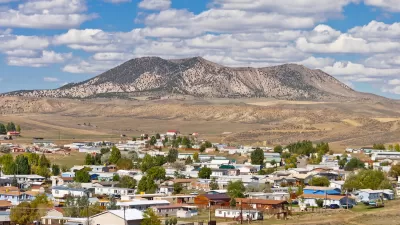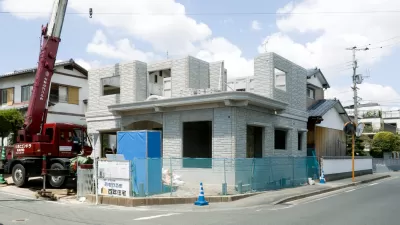Prefab housing is experiencing a revival of interest among architects and design magazines. But as one realtor puts it, “I just think the whole thing is a false promise."
"Today there is once again a sense of excitement and curiosity as modern prefab architecture returns to the mainstream, rescued from its stigma as cheap or even mobile housing by a new wave of well-designed units. Innovative new ideas have popped up in large numbers, ranging from Ecoshack's prefab yurts and the Katrina Cottages for Gulf Coast hurricane victims to prefab homes by the furniture company Design Within Reach. But there's also intense scrutiny and skepticism surrounding prefab, or modular or factory housing, as it's otherwise called. Some argue that while prefab is touted for its ability to be mass-produced, it's delivered to relatively few. Others note that while it promises affordability, modern prefab is often expensive (for example, California developer Steve Glenn's much-publicized Living Homes, with designs by Ray Kappe and Kieran Timberlake, generally average well over $200 per square foot). More question marks surround such issues as durability, comfort, and variety. For the architect entrepreneur looking to sell prefab as a business, it remains unclear if it's possible to turn a profit. For the time being, as prefab units rise in cost, dividends remain small because few houses have been widespread sellers."
FULL STORY: Can Prefab Deliver?

Trump Administration Could Effectively End Housing Voucher Program
Federal officials are eyeing major cuts to the Section 8 program that helps millions of low-income households pay rent.

Planetizen Federal Action Tracker
A weekly monitor of how Trump’s orders and actions are impacting planners and planning in America.

Ken Jennings Launches Transit Web Series
The Jeopardy champ wants you to ride public transit.

From Throughway to Public Space: Taking Back the American Street
How the Covid-19 pandemic taught us new ways to reclaim city streets from cars.

Opinion: Transit Agencies Must View Service Cuts as Last Resort
Reducing service could cripple transit systems by pushing more riders to consider car ownership, making future recovery even less certain.

‘Smart Surfaces’ Policy Guide Offers Advice for Building and Maintaining Urban Tree Canopies
Healthy, robust tree canopies can reduce the impacts of extreme heat and improve air quality.
Urban Design for Planners 1: Software Tools
This six-course series explores essential urban design concepts using open source software and equips planners with the tools they need to participate fully in the urban design process.
Planning for Universal Design
Learn the tools for implementing Universal Design in planning regulations.
Heyer Gruel & Associates PA
Ada County Highway District
Institute for Housing and Urban Development Studies (IHS)
City of Grandview
Harvard GSD Executive Education
Toledo-Lucas County Plan Commissions
Salt Lake City
NYU Wagner Graduate School of Public Service





























